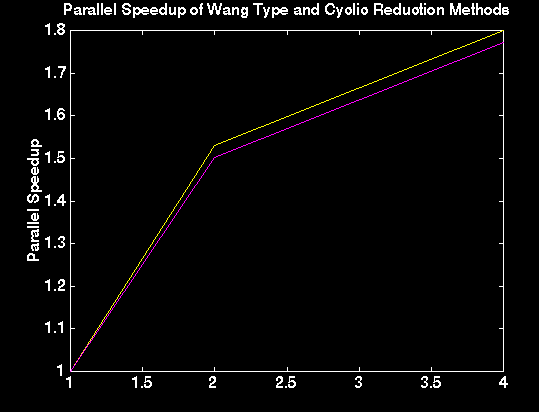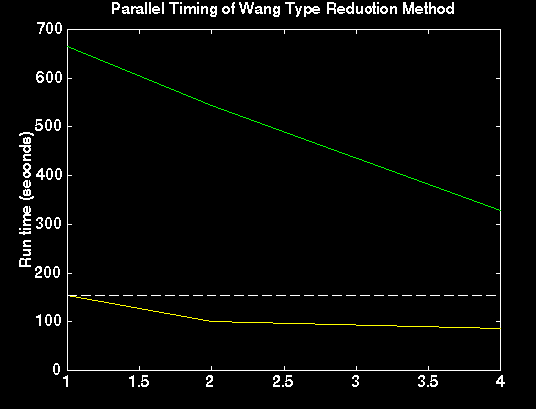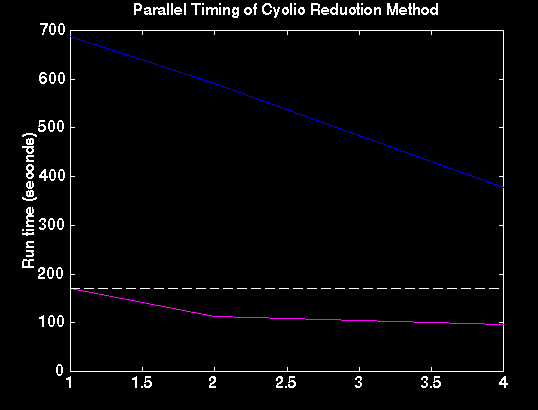![]()
![]()
Steve Lantz currently has me working on two projects dealing with MagnetoHydroDynamic (MHD) simulation codes. The first project is the visualization of the data produced by the codes. More information about that project can be found here. The second project is to test the speeds of different coding methods using different numbers of nodes or problem size. This page deals with the results from the second project. For more information about MHD, Steve Lantz, or these projects, see Steve's home page.
 A look at part of the visualization project:
A look at part of the visualization project:

The MHD code was tested using both a Wang type and a cyclic reduction algorithm. The Wang type (yellow line) reduction method had better performance than the cyclic (pink line) reduction method. This was tested on 1, 2 and 4 nodes. This was for a run of 10,000 steps using a 64x32 grid. Run time is the time to run the entire MHD code.

Another important question was the scalability of the code. The same test was done using 10,000 steps and a 128x64 grid. The parallel speedup for the Wang type reduction was much better with the larger grid size than for the smaller. The green line is the 128x64 grid size while yellow line is the 64x32 grid size.

The same improvement can be seen in the cyclic reduction method. Here the pink line is the 64x32 grid size and the blue line is the 128x64 grid size.

Overall, the Wang type reduction method performed better than the cyclic reduction method.
These tests ran on the SP2 here at Cornell's Theory Center using MPI message passing routines. The programs were developed by Steve Lantz.
I also worked on some visualization tools. Click here to read some more about it.
Last maintained by Howard Daniel Sanders 12/05/96.
Send questions or comments by Email to hds1@cornell.edu.